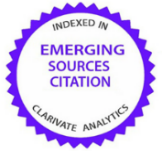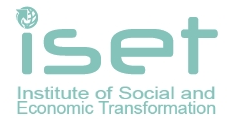The role of support and financing of the armed forces as one of the key elements of the stability of the Ukrainian economy and ensuring its sustainable growth
Abstract
Introduction. Military conflicts cause a lot of destructive influences not only on the political situation in the country but of course on its the financial system. That’s why in this article, the main emphasis of the research was done on risk-ratio analysis of the Ukraine and Israel economies since the role of military budget expenditures in the whole financial system is growing. Military finance is one of the biggest components of the financial system of Ukraine. So, according to the nowadays situation and military conflict in Ukraine appears the necessity of searching for new ways to increase this kind of expenditures efficiently.
Aim and tasks. The problem of the research was to measure risks of the economies according to the GDP trends and to find the place of the military expenditures in all government expenditures.
Results. In the research results, it should be mentioned that the most difficult approach for comparing is the international currency, which is weighed against the depreciation of cash flows in time. However, the research used the current exchange rate for convenience. But, this does not have a significant effect on the interpretation of the results of the research, presented in the form of a CAPM analysis of the economies of countries and their defense expenditures. After all, trends are generally observed over a period of time that has been analyzed. The general state of financial systems in the regions was analyzed as the value of volatility, aggregate risks and the overall growth of the economy. The US GDP, as for an example of the largest economy in the world, served as a comparative basis. It correlates and affects all other financial markets. The obtained results made it possible to draw conclusions about the attractiveness of the state for potential investors, despite armed conflicts with neighbors in the territory and areas of influence on the regions under control. In this paper, a standard statistical analysis package was used using an example of linear regression with one variable. The power of the influence of military expenditures was measured by the ratio of variables and their correlations. The obtained results were characterized by a high level of interconnection power and reliability of the hypotheses obtained. This gives an opportunity to describe the role of military conflicts and support the Armed Forces for the state economy.
Conclusions. The result of the presented research of the role of support and financing of the Armed Forces as one of the key elements of the stability of the Ukrainian economy and ensuring its sustainable growth is the sustaining of the military expenditures for Ukraine. The presented conclusion was approved on the Israel example and calculations. This approach and methodology is universal and can be used for other researches.
Keywords:
military expenditure, military budget, financial support, risk-ratio analyses, Armed Forces, GDPReferences
2. Vykulov S. F., Zhukov G. P., V. N. Tkachev & Ushakov V. Ja. (2001). Voenno-ekonomycheskyj analyz. Moscow: Voenyzdat [in Russia].
3. Fedosov V.M. (1991). Ghosudarstvennye fynansy [Ghosudarstvennye fynansy]. Kyiv; Lybidj [in Russian].
4. Andresjuk B.P. (2002). Reformuvannja Zbrojnykh Syl na suchasnomu etapi. Kyiv: Universytetsjke vydavnyctvo “Puljsar” [in Ukrainian].
5. Cheberiako, O. V. (2017). Finansove zabezpechennia oborony Ukrainy yak osnova natsionalnoi bezpeky v umovakh zbroinoi ahresii RF. Scientific Letters of Academik Society of Michal Baludansky, 5(2), 49-58 [in Ukrainian].
6. Cheberyako, O. V. & Varnalii, Z. S. (2017). Financial Prerequisites And Assessment Of Defense Under The Conditions Of Russian-Ukrainian Hybrid War. Scientific Bulletin Of Polissia, 1(4(12)), 143-149. doi:10.25140/2410-9576-2017-1-4(12)-143-149.
7. Hatice K. Ç. (2009). A Theoretical Glance at Military Expenditures, Economic Research-Ekonomska Istraživanja, 22(4), 118-127, doi: 10.1080/1331677X.2009.11517395.
8. MSCI Global investible indexes market methodology (2019). Morgan Stanley Capital International. Retrieved from: https://www.msci.com/market-cap-weighted-indexes.
9. Sharpe, W. F., Alexander, G. J., & Bailey, J. V. (2005). Investments, sixth edition. New Jersey: Prentice-Hall.
10. Pakholchuk V.V. (2019). Theoretical and Practical Approach to the Analysis of Financing Data of the Armed Forces of Ukraine and the Other Military Formations. Modern Economics, 13(1), 201-206. doi: 10.31521/modecon.V13(2019)-31.
11. Gross Domestic Product for Ukraine (2017) Federal Reserve Bank of St. Louis economic data. Retrieved from: https://fred.stlouisfed.org/series/MKTGDPUAA646NWDB#0.
12. Gross Domestic Product for Ukraine (2017). World Bank economic data. Retrieved from: https://data.worldbank.org/country/ukraine.
13. Gross Domestic Product for the USA (2017). Federal Reserve Bank of St. Louis economic data. Retrieved from: https://fred.stlouisfed.org/series/GDPA.
14. Gross Domestic Product for Israel (2017). Federal Reserve Bank of St. Louis economic data. Retrieved from: https://fred.stlouisfed.org/series/MKTGDPILA646NWDB.
15. GDP Weighting in Asset Allocation (2015). Morgan Stanley Capital International. Retrieved from: https://www.msci.com/documents/10199/bd587385-8f67-423d-bd82-8e5ce52fa13b
16. OECD Economic Surveys (2018). Organisation for Economic Co-operation and Development. Retrieved from: https://www.oecd.org/eco/surveys
17. Razin, A. (2018). Israel and the world economy: The power of globalization. Cambridge, Mass.; London, England: The MIT Press.
18. Avigur-Eshel, A., & Filc, D. (2017). Military Conflict and Neo-Liberalization in Israel (2001–2006): A Neo-Gramscian Approach. Political Studies, 66(2), 503-520. doi:10.1177/0032321717722356
19. SIPRI Military Expenditure Database (2018). Stockholm International Peace Research Institute. Retrieved from: https://www.sipri.org/databases/milex.
20. WMEAT World Military Expenditures and Arms Trade (2018). US Department of State. Retrieved from: http://www.state.gov/t/avc/rls/rpt/wmeat/.
21. Yesilyurt, M. E., & Elhorst, J. P. (2017). Impacts of neighboring countries on military expenditures. Journal of Peace Research, 54(6), 777-790. doi:10.1177/0022343317707569
22. Phillips, B. J. (2014). Civil war, spillover and neighbors’ military spending. Conflict Management and Peace Science,32(4), 425-442. doi:10.1177/0738894214530853
23. Sandler, T., & Hartley, K. (2001). Economics of Alliances: The Lessons for Collective Action. Journal of Economic Literature, 39(3), 869-896. doi:10.1257/jel.39.3.869

This work is licensed under a Creative Commons Attribution-NonCommercial 4.0 International License.
If the article is accepted for publication in the journal «Economics. Ecology. Socium» the author must sign an agreementon transfer of copyright. The agreement is sent to the postal (original) or e-mail address (scanned copy) of the journal editions.





















